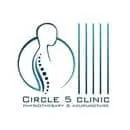Foot pain: Causes, symptom and Treated with Physiotherapy – now in Giza, Egypt
Pain of the Foot is a condition where the soles of the foot become painful and inflamed. This situation can show you if you are involved in activities involving running and jumping. There are other reasons as well, including foot deformities and shoes that are too tight or too loose. and treatment by physiotherapist.
Although the pain of the Foot is generally not serious, it may prevent normal activities. Home advice, such as ice and rest, can often relieve the symptoms of aching pain. Wear appropriate shoes with shock absorb or brace supports may prevent or reduce future problems in the case of muscular pain.
Symptoms of Foot pain can include:
- Acute, painful, or burning pain in the foot - the foot part of the foot behind your toes.
- Pain gets worse when you stand, walk, stretch your feet or walk - especially when you walk barefoot on a hard surface - and get better when you get some rest.
- Acute or sudden pain, numbness, or numbness in your toes.
- The sensation of having a pebble inside your shoes.
Causes of foot pain:
- Activity or hard training. Runners are at risk of instep pain, because the foot introduction basically absorbs a great amount of pressure when running. But anyone who is involved in high-impact exercise is at risk of developing the disease, especially if the shoe is worn out or misplaced.
- Certain feet. The high arch of the foot can impose excessive pressure on the instep. Therefore, the presence of a second finger longer than the big finger can cause a larger than normal load to the second comb head.
- Foot abnormalities. Wear very small or high-heeled shoes may distort the shape of the foot. The flexion of one of the fingers downwards (the toe of the hammer), swelling of the big finger and injury with painful protrusions at the bottom (and capes) to the pain of the instep.
- Overweight. Because most body weight moves to the front of the foot when moving, more weight means more pregnancy on the instep. Weight loss may relieve or remove the pain of the instep.
- Shoes with inappropriate sizes. High heels, which carry more weight to the front of the foot, are a common cause of the pain of the instep in women. Narrow shoes from the front or sports shoes that lack the appropriate stent or lining can contribute to the problems of the instep pain.
- Stress fractures. Small fractures in the bones of your instep or fingers can be painful, making you change the way you put your foot on.




